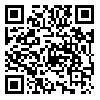BibTeX | RIS | EndNote | Medlars | ProCite | Reference Manager | RefWorks
Send citation to:
URL: http://ijict.itrc.ac.ir/article-1-287-en.html
Because of the joining behavior of Persian script and its orthographic variation, the morphological and syntactic annotations of multi-token units meet various issues. By the analysis of Perso-Arabic script and its problems, the various collocation types of the tokens including the compositional, non-compositional and the new semicompositional constructions are described in the present paper. Then, to illustrate these constructions, the static and dynamic multi-token units will be presented for the generative and non-generative structures of the main categories including the verbs, infinitives, prepositions, conjunctions, adverbs, adjectives and nouns. Defining the multi-token unit templates for these categories is one of the important results of this research. The findings can be input to the segmentation module of the Persian Treebank generator system. The other usage of the present research is in the design and implementation of the morphological analyzers and syntactical parsers.
| Rights and permissions | |
 | This work is licensed under a Creative Commons Attribution-NonCommercial 4.0 International License. |




